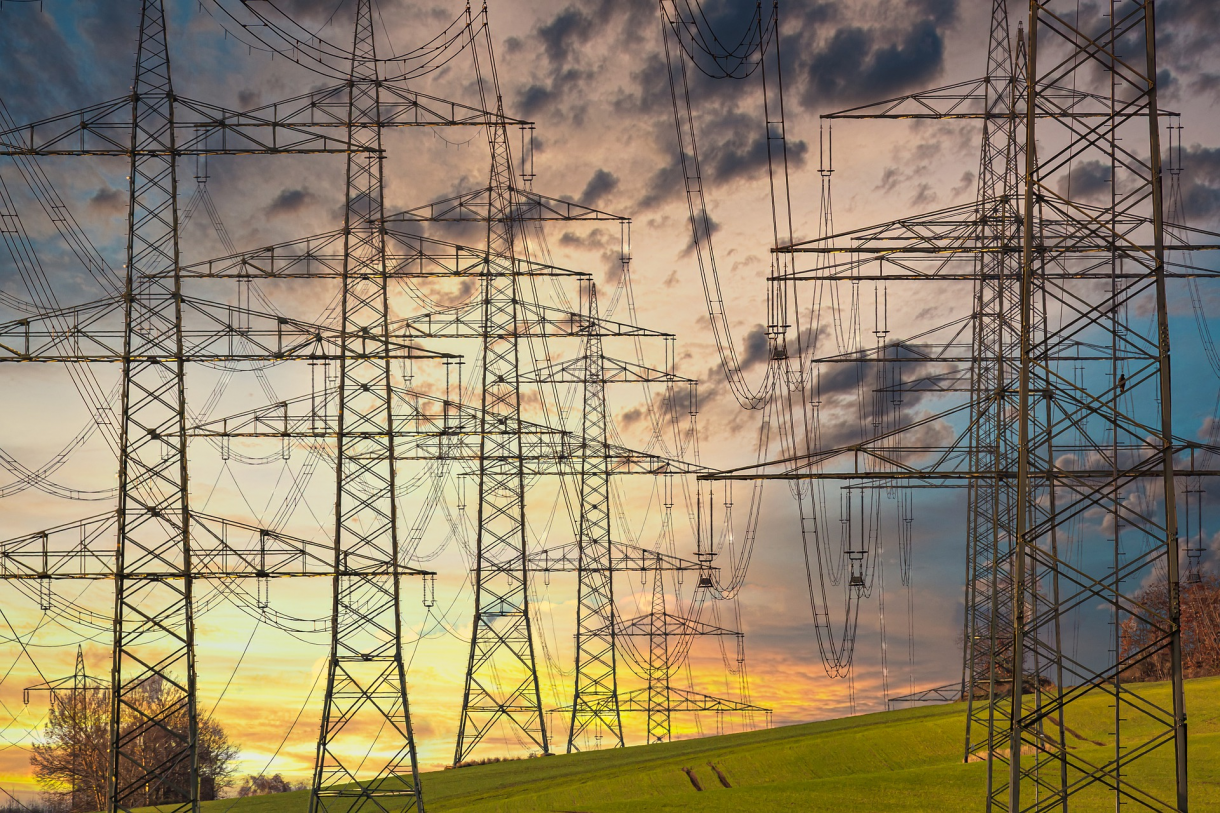Energy security and affordability in the European Union

Share this Post
Introduction
Energy systems can be understood as complex adaptive systems with interconnected, heterogeneous elements; given the complexity of the social and technological dynamics involved, energy issues can turn into security issues. In terms of policy, in the wake of the oil crisis of the 1970s energy security has been defined as a stable supply of cheap oil, the main threats to such security being embargoes and price manipulation by exporter countries. At present, however, energy security goes well beyond oil supply; it is closely connected to other policy challenges such as climate change, globalization, and energy decarbonization. Energy security currently has a range of environmental, social, political, and policy components, though various institutional, national, and individual perspectives differ in the importance they ascribe to each. Such multi-dimensional definition of energy security fully reflects the intricate nature of the modern energy industry and the complexity of modern society as a whole.
Energy security from the perspective of the European Union
During the years of smooth energy imports flow that followed the 1970s oil crisis, energy security was a second priority for Europe. After the Eastern Enlargement (2004-2007), and particularly following the energy crises in the winters of 2006 and 2009, energy security became a top priority for the European Union (EU). The European Energy Security Strategy, presented in 2014, pointed out that “EU prosperity and security hinges on a stable and abundant supply of energy.” In the current European energy policy, the definition of energy security is in line with that of the International Energy Agency (IEA), namely as “uninterrupted availability of energy at an affordable price.” Given the EU’s heavy reliance on imports, its current energy policy focuses on ensuring a stable flow of energy and affordable energy prices in the face of potential energy crises.
EU energy security as security of energy transit: historical background
Historically, natural gas imports to Europe passed through Ukraine via pipelines. In the 1980s, the Soviet Union secured energy demand and ensured energy transit security by means of the Bratstvo (Brotherhood), Soyuz (Union), and Trans-Balkan natural gas pipelines constructed over Ukrainian territory. The dissolution of the Soviet Union did not jeopardize these supply flows, although Russian gas production slowed down during the 1990s. Real problems emerged when Ukraine started building relations with neighboring countries other than Russia for domestic political reasons; whereas Russia, following the election of Vladimir Putin, endeavored to reaffirm its authority over its former satellites.
Geopolitical tensions between Russia and Ukraine escalated into energy disputes. Russia implemented a strategy of diversifying the channels of natural gas transit by building the Yamal-Europe pipeline, which bypassed Ukraine altogether. After the 2004–2005 Orange Revolution in Ukraine, Kremlin asserted “Ukraine’s unreliability to provide for secure transit” as the reason to build new pipelines. In January 2009, Gazprom, the Russian natural gas producer and supplier, cut off natural gas supplies to and through Ukraine, spurring its European customers into action. In 2011, the amount of natural gas delivered via Ukraine was further reduced after the inauguration of the Nord Stream pipeline, which linked Russia to Germany via the Baltic Sea. The 2014 military conflict in Ukraine further intensified concerns within the EU regarding this delivery channel for Russian gas. In 2015, Russia started constructing a second Nord Stream II pipeline to Germany, parallel to Nord Stream. This second Gazprom-owned pipeline is now completed but still awaiting EU approval.
While both the EU and Russia were addressing the energy transit problem in Ukraine, the EU, on its part, also started planning to reduce its dependence on Russian natural gas. The 2009 disruption of natural gas supply forced the EU Commission to diversify EU’s energy supply by adopting its 1998 and 2003 directives and, finally, the Third Energy Package. The latter, along with the development of a global liquefied natural gas (LNG) market, enabled the EU to create a more competitive energy marketplace and to reduce Russia’s dominance of the market.
Despite tense relations with Russia, the EU is still dependent on Gazprom for a considerable portion of its natural gas supply, and Ukraine remains the key transit route for Russian exports to Europe.
Energy availability in the EU: heavy reliance on imports
In 2019, 39% of all energy available in the EU was produced internally, while 61% was imported. In the last decade, the European Union has been increasingly dependent on energy imports, and the total import dependency hit an unprecedented high value in 2019. The abrupt fall in 2020 was linked to the reduction in energy demand due to the COVID-19 pandemic restrictions and the consequent economic crisis.
Energy produced in the EU comes from a variety of sources. In 2019, the total of EU-produced energy comprised 37% renewable, 32% nuclear, 19% coal, 8% natural gas, and 4% crude oil. The extent of reliance on different sources for energy production differs between individual EU member states; for example, nuclear power generation is prevalent in France, whereas natural gas is the primary source of energy produced in the Netherlands, and crude oil – in Denzmark.
The “energy mix”, i.e. the range of available sources of energy (both locally produced and imported), comprised 36% petroleum products (including crude oil), 22% natural gas, 15% renewable energy, and 13% nuclear energy and solid fossil fuel. The energy mix, however, differs across EU member states. Petroleum products are used to produce 90% of all energy available in Cyprus; natural gas – 39% of all energy in Italy and 37% in the Netherlands; 60% of all energy in Estonia comes from solid fossil fuels; nuclear power accounts for 41% of all energy produced in France; and renewable energy – for 41% of all energy produced in Sweden.
While natural gas is a significant energy source for EU member states, much of it is imported. 41% of total natural gas imports to the EU come from Russia through the pipeline systems described above. (Russia is also the primary supplier of crude oil and solid fuels.)The extent of dependency on Russian natural gas varies among individual member states. In 2018, for example, Germany and Italy each imported over 48% of their natural gas from Russia, while France – only 19.9%. For Eastern Bloc EU members such as Hungary and Bulgaria, Russian gas accounts for almost all of their natural gas imports.
In addition to natural gas, EU countries also import LNG; the largest suppliers to Europe are Qatar and Nigeria, followed by the US. In the year between 2018 and 2019, LNG imports to EU member states increased by 75%, amounting to 25% of all gas imports. The biggest importers of LNG in 2019 were Spain, France, Italy, the Netherlands, and Belgium.
EU Energy Markets
The gas markets in Europe show a high level of integration, that is, they are interconnected to a high degree; this connectivity continues to improve steadily. Building a transparent and integrated internal gas market, in order to safeguard affordable and secure energy supply for member states, has been the objective of major regulatory reforms within the EU Commission over the past two decades. The 1998 and 2003 directives tightened the regulation of gas facilities, retail, transmission, and distribution, and by doing so, progressively brought about competition and created an internal EU gas market. In 2009, the Third Energy Package directive was adopted with the aim to separate network activities from production and supply activities. The Agency for the Cooperation of Energy Regulators (ACER) was also created as an independent body charged with creating an integrated European internal energy market for electricity and natural gas. The ACER ensures that national energy markets are integrated and that legislation is implemented in accordance with the EU’s energy policy goals and regulatory frameworks. The introduction of uniform network codes among all energy regulators promoted the European gas market’s normalization, integration, and efficiency in the last decade.
The LNG market has been developing in the EU over the past years, and by now LNG has become an important source of natural gas. Since 2010, when the US had started the shale gas revolution, the European market has received an oversupply of LNG from Qatar, Nigeria, and Oman. Regulatory changes have liberalized the consumer market, enabling the supply of affordably priced gas to consumers. Besides, LNG supply infrastructure, comprising interconnected transportation and storage facilities, has developed in the EU member states in recent years. The high level of LNG penetration into the European energy market made it a marginal price setter in many national gas markets in the EU.
EU electricity wholesale market is characterized by a process known as market coupling, whereby prices and electricity exchanges are determined across market areas and bidding zones. Electricity prices across the EU are set using the marginal pricing method called ‘pay-as-clear’. For instance, all electricity producers in the same bidding zone are encouraged to quote at actual production costs and dispatch for the longest time. In the end, they are all paid the same price (the clearing price), which is the price of the last purchased unit of energy.
Power production costs for different energy sources tend to vary considerably. Whereas renewable energy production – such as solar or wind – has low marginal costs due to low operating expenditure (OPEX), coal-based and gas-based power have the highest marginal production costs given their high OPEX.
The marginal pricing method is used in order to encourage competition in the EU electricity market, which is also open to smaller renewable energy producers. Additionally, it provides benefits for renewable energy producers that rely on capital intensive (high CAPEX) technologies and need to recover higher capital costs.
The electricity market in the EU is less integrated than the gas market; as a result, electricity prices vary considerably between the member states, whereas gas prices are similar across the entire region. Moreover, the extent of EU countries’ dependence on natural gas for their electricity generation varies; it is highest in the markets of Southern European countries and the Ireland Single Electricity Market.
Current energy price crisis: demand and supply dynamics create risks for EU energy security
The fall of 2021 has been characterized by unprecedentedly high energy prices across Europe. Thus, for instance, gas prices increased by 400% between April and October 2021, which in turn led to a 200% increase in the price of electricity over the same period. While the increase of gas prices was almost uniform across the EU due to the high level of integration between national natural gas markets, the extent of electricity price increases fluctuated between member states. The greatest price increases were recorded in Southern European markets, where natural gas accounts for a significant portion of electricity generation. Yet even France, where almost 70% of electricity is produced from the less expensive nuclear power, saw steep price increases as natural gas still drives the wholesale electricity price.
The worldwide LNG demand and supply dynamics further compounded the effects of the heavy systemic dependency on natural gas imports within Europe. Thus, demand for LNG in North-East Asia increased between January – March 2021 due to a prolonged period of cold weather, as well as industrial activity in the region recovering from the breakdown caused by COVID-19. The Panama Canal bottleneck further exacerbated LNG supply issues, causing LNG prices to peak in the Japanese and Korean markets. At the same time, the demand for LNG likewise grew considerably in South-East Asia and Latin America, driving global gas prices even higher and reducing the availability of LNG for imports to Europe. European LNG imports declined by 20% over the 12 months to September 2021. As explained before, LNG is a marginal price setter in many EU gas markets, and thus its scarcity led to the increase in the price of natural gas offered by pipeline suppliers.
Regional factors within the EU itself contributed further to the increase in gas prices. Increased demand due to economic recovery coincided with a 10% decline in domestic gas production and supply constraints (due to maintenance issues and a drop in investments). As of mid-October 2021, gas storage levels were at 77% capacity. At the same time, the global coal shortage led to price hikes, while the low volume of power currently generated from renewable sources (such as wind and hydro) limits their viability as an alternative to gas.
According to ACER research, current high energy prices in Europe were caused by global factors outlined above, and there was no evidence of systematic manipulative behavior that might have caused this price crisis. Although Gazprom has covered its contractual supply commitments to the EU, high gas prices in Europe in the fall of 2021 did not lead to a corresponding increase in supply on the part of Gazprom. A likely contributing factor is the challenges currently faced by the Russian gas sector, namely a 12% increase in domestic consumption, depleted storage stocks that need to be refilled, and the increase in exports to other markets. In addition, power outages and maintenance issues have affected the Russian supply.
EU countries face rising inflation due to soaring energy prices. Many member states have started questioning the energy market rules imposed by the Commission. France, Spain, Romania and Greece have asked the EU Commission to make changes in the energy market and energy pricing regulations. Germany and the Netherlands, on the other hand, display caution and are unlikely to push for legislative changes that would affect the energy market.
In response to member demands, the EU Commission has set up a toolbox for tackling energy price increases. Emergency measures addressing the immediate impact of high prices include income support to households, state aid for companies, and targeted tax reductions. Furthermore, the EU Commission has committed to supporting investments in energy efficiency, the development of renewable energy technologies, energy storage; and increasing gas reserves in order to foster resilience to future prices shocks.
European Commission President Ursula von der Leyen, in her speech on 20 October 2021, emphasized the necessity to speed up the transition to clean energy via the Green Deal scheme. This is expected to lead to a diversification of the EU’s energy supply which is, in her view, the unique answer to this, and any future, energy crisis.
In response to inquiries into Russia’s role in the European energy crisis in October 2021,Putin denied all responsibility, blaming the existing EU energy policies instead. At the same time, he declared Russia’s readiness to supply more natural gas to Europe in order to stabilize the market. The Kremlin has also denied that Russia manipulates gas supplies to pressure the EU into quickly granting regulatory approval of Nord Stream II.
The certification of the Nord Stream II pipeline has been delayed in these last years by stiff resistance on the part of a number of EU countries and the US, who see in it a Russian strategy to avoid gas transit through Ukraine. Germany announced measures to stop the approval of the pipeline as one of the biggest sanctions of the European Union in response to the mobilization of Russian troops into two pro-Russian separatist enclaves in eastern Ukraine.
Energy price crisis: short- and long-term perspectives, and challenges to energy security
Despite a challenging forecast for the energy market, there are signs of a short-term price decline after the end of winter, according to ACER analysis. Moreover, market expectations tend to prefigure price normalization over the next two years; the current energy price escalation is seen as temporary. The current winter season in Europe and the level of economic activity are crucial factors in any short-term energy demand and price developments. Should energy prices remain high, though, different regulatory considerations will be required to address their short-term and longer-term impact.
As previously explained, the current energy crisis poses a risk to the EU’s energy security in terms of both supply and pricing. Energy price volatility is often at the root of economic tensions, and price shocks may stifle an economy’s full potential. In fact, the energy crisis impedes industrial competitiveness, and resulting inflationary pressures may slow down the EU’s economic recovery from the breakdown caused by COVID-19. Moreover, inflation in the energy sector, driven by the price of natural gas, leads to increasing inflation across the Eurozone.
The energy crisis is also an equity issue, since the high prices – and the ensuing high energy bills – disproportionally affect low-income households and vulnerable consumers. Unaffordable energy is an aspect of energy poverty, which means that the level of energy consumption is insufficient to meet basic needs. Energy poverty is certainly one of energy security’s socioeconomic dimensions, a challenge as well as a risk. From a household perspective, security requires a high quality, reliable and regular supply of energy.
Furthermore, the spike in natural gas prices might precipitate a reversal of the energy transition trend, whereby implementation of emergency energy policies reliant on the cheaper pollutant fuels would lead to the EU breaking its international climate commitments.
The extent to which energy transition proceeds will be a major influencing factor on the global economy, inasmuch as it affects the energy-mix composition and influences the international energy trade. Energy supply structure is a known crucial geopolitical factor that has a substantial effect on the EU’s energy security. The shift from coal in energy production has increased countries’ reliance on natural gas. Although natural gas is seen as a transition fuel in many EU countries, reducing fuel diversification in the wake of an energy crisis would place EU’s energy security at risk.
These days, the Russia-Ukraine conflict increases the apprehension about its geopolitical and humanitarian consequences, and because of it, energy security, reliability, and supply are undermined at the EU and global levels.
Glossary
Natural gas is naturally-occurring combustible gas. It is a fossil fuel that originates beneath the Earth’s surface and contains a mixture of hydrocarbon gases, primarily methane. Transportation of natural gas, from point of origin to point of consumption, involves complex networks of intrastate/interstate pipelines, onshore and/or offshore. Natural gas must be pressurized so that it can move along the pipeline to its destination. Compressor stations are located at intervals along the pipeline to keep the natural gas pressurized.
Liquefied Natural Gas (LNG) is natural gas converted to liquid form for ease of transportation and storage. Gas liquefaction process involves cooling it to the temperature of -162 °C. In its liquid form, LNG takes up 600 times less space than an equivalent amount of gas, making it easier to transport over vast distances in specially designed ships or road tankers. When LNG reaches its final destination, it is usually re-gasified and delivered through gas networks, just like gas from pipelines.
Shale gas is natural gas from a reservoir (shale); while it has the same composition as natural gas, the difference lies in the location and geological properties of the reservoirs. It is considered an unconventional hydrocarbon-based fuel. Its extraction requires hydraulic fracturing, also called “fracking” – a process that involves opening fissures in the rock using a mix of water, sand, and additives under high pressure, in order to release the gas. while The US has been financing shale gas exploitation since 2010. Some EU countries, however, have banned hydraulic fracturing in recent years due to public concern over the environmental impact of shale gas extraction.
Further Reading
- Winzer, C. Conceptualizing energy security. Energy Policy 2012, 46, 36–48, doi:10.1016/j.enpol.2012.02.067.
- Szulecki, K. Energy Security in Europe; Szulecki, K., Ed.; Springer International Publishing: Cham, 2018; ISBN 978-3-319-64963-4.
- Tichý, L. EU political discourse on the energy security relations with Russia. Eur. Polit. Sci. 2020, 19, 603–621, doi:10.1057/s41304-019-00229-x.
- Rodríguez-Fernández, L.; Fernández Carvajal, A.B.; Ruiz-Gómez, L.M. Evolution of European Union’s energy security in gas supply during Russia–Ukraine gas crises (2006–2009). Energy Strateg. Rev. 2020, 30, 1–9, doi:10.1016/j.esr.2020.100518.
- Berdysheva, S.; Ikonnikova, S. The energy transition and shifts in fossil fuel use: The study of international energy trade and energy security dynamics. Energies 2021, 14, doi:10.3390/en14175396.
- Dubois, U.; Meier, H. Energy affordability and energy inequality in Europe: Implications for policymaking. Energy Res. Soc. Sci. 2016, 18, 21–35, doi:10.1016/j.erss.2016.04.015.
This backgrounder is published in the framework of the European-Israeli Forum for Environment and Sustainability, a joint initiative by the Israel Public Policy Institute (IPPI) and the Heinrich Böll Stiftung Tel Aviv.
The opinions expressed in this text are solely that of the author/s and do not necessarily reflect the views of the Israel Public Policy Institute (IPPI) and/or the Heinrich Böll Stiftung Tel Aviv.
Share this Post

Navigating the Future: Germany's Autonomous Driving Act
The Autonomous Driving Act took effect in Germany on July 28, 2021, introducing significant and comprehensive amendments to…

State support for energy efficiency in buildings: A view from Germany
One of the most influential European practice schemes to support energy efficiency investments in the building sector with…

Why 'Responsible AI' Is Good for Business
Artificial Intelligence (AI) algorithms have gained a growing influence over our society. It is not unusual to see…
